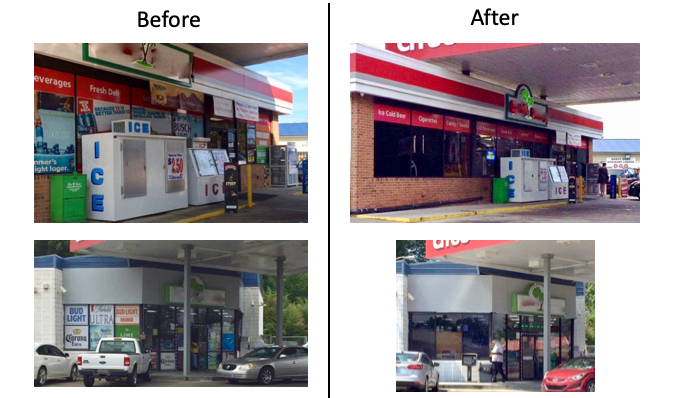Content Neutral Sign Ordinances in Orangeburg, SC
Restrictions on tobacco industry advertising and promotions at the point-of-sale are effective strategies for counteracting the tobacco industry’s efforts to attract new, current, and recently quit smokers. However, attempts to restrict tobacco advertising at the point of sale often run into first amendment commercial free speech issues. One type of advertising restriction that avoids those issues is a content-neutral sign ordinance. This type of policy restricts all types of advertisements, including those for tobacco, alcohol, and other products, usually limiting the percentage of window space or other storefront areas that can be covered with signs.
After conducting retail store assessments at all 26 retailers in Bamberg County and receiving training on point-of-sale tobacco control from Counter Tools, the Tri-County Commission on Alcohol and Drug Abuse (TCCADA) was looking for next steps to help address the glut of tobacco marketing present in their community. As the name implies, the Commission covers two other counties in South Carolina: Orangeburg and Calhoun. TCCADA planned to conduct store assessments in those two counties as well, and they took a look at the tobacco control laws currently on the books in all three counties. What they found was a happy surprise: both the county and the city of Orangeburg already had a policy on the books within their zoning ordinance that limits the amount of advertising on the exterior of stores to 25% of the wall area. However, this signage ordinance had not been enforced. TCCADA’s agency director contacted the county administrator and zoning administrator, who sent out warning letters to stores, notifying them of the ordinance and notifying them that there would be upcoming inspections to ensure compliance with the code. Below you can see before and after photos pre- and post-enforcement.
These types of ordinances are often primarily put in place for safety reasons – to allow a clear line of sight both into and out of the store windows – or to reduce cluttered storefronts for town beautification projects. With the Orangeburg ordinance now in force, TCCADA is turning their sights to the other counties in their purview and raising awareness of the benefits of these type of sign ordinances in hopes of implementing something similar there. They have begun raising awareness about the benefits of such a policy through radio ads, newspaper ads, a community survey, outreach to tobacco retailers, outreach to potential partners such as health coalitions, and outreach to city mayors as well as city and county councilmembers. Learn more about TCCADA’s Storefront Project.
Learn more about advertising restrictions at the point of sale and find a model ordinance from ChangeLab Solutions here.
View more Stories from the Field



